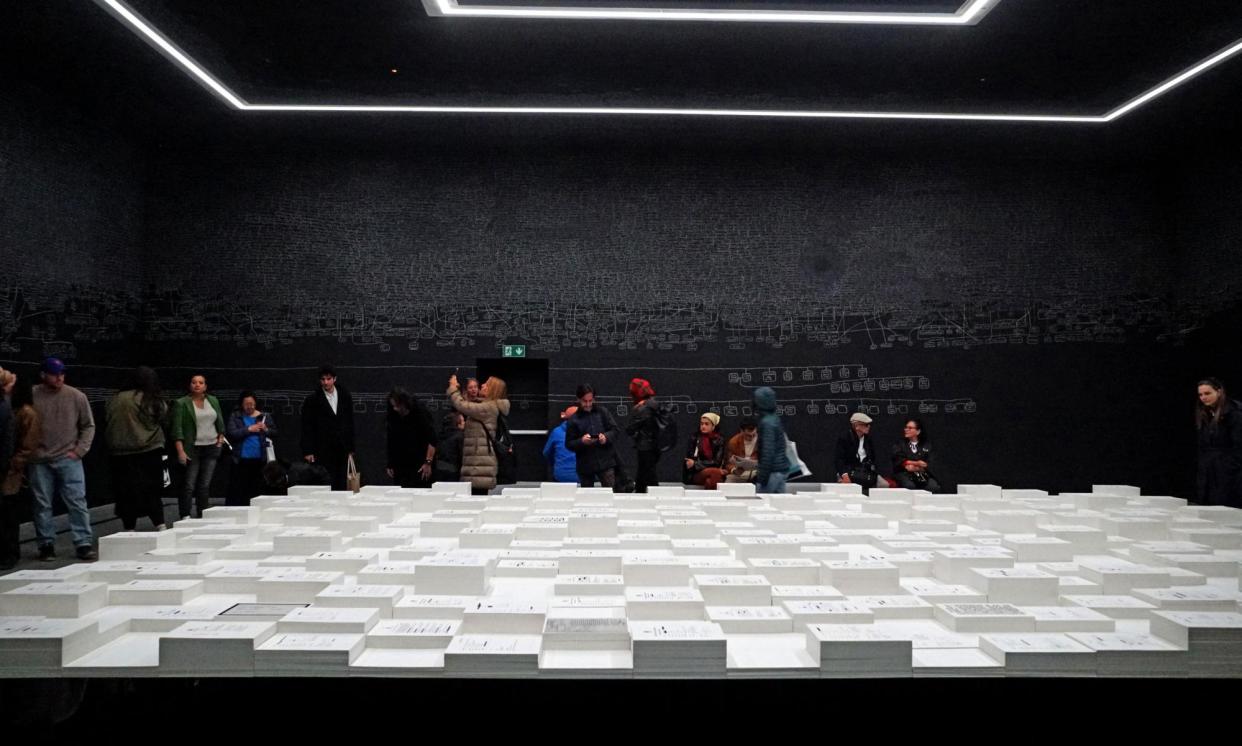Artwork commemorating Indigenous Australian history triumphs in Venice

The artist Archie Moore has won the prestigious Golden Lion for best national participation at the 2024 Venice Biennale – the first time an Australian artwork has won the prize.
With this year’s theme of “Stranieri Ovunque – Foreigners Everywhere,” Moore won the award for his artwork, kith and kin, at the Australia Pavilion. The work, which has involved the artist mapping a sprawling genealogy in chalk, concerns 65,000 years of Indigenous Australian history and nonlinear concepts of time and place. Below the vast family tree covering the dark walls and ceiling stands a white table covered in records of First Nations deaths, including those in police and prison custody.
The piece, curated by Ellie Buttrose and commissioned by Creative Australia, is the result of extensive research – including in libraries, newspapers and archives, but also using Guardian Australia’s database Deaths Inside and discussions with family members.
Awarding the accolade, the jury of the 60th International Art Exhibition of Venice Biennale said: “In this quiet, impactful pavilion, Archie Moore worked for months to hand-draw in chalk a monumental First Nation family tree. Thus, 65,000 years of history (both recorded and lost) are inscribed on the dark walls and ceiling, inviting viewers to fill in the blanks and grasp the inherent fragility of this mournful archive.”
It noted how official state documents, which were gathered by Moore’s meticulous research and float in a pool of water, “reflect the high rates of incarceration of First Nations people”.
The jury said the installations stood out for its “strong aesthetic, its lyricism and its invocation of a shared loss of an occluded past”. “With his inventory of thousands of names, Moore also offers a glimmer of the possibility of recovery,” it added.
Moore said he felt “honoured” to be rewarded for his work. “As the water flows through the canals of Venice to the lagoon, then to the Adriatic Sea, it then travels to the oceans and to the rest of the world – enveloping the continent of Australia – connecting us all here on Earth. Aboriginal kinship systems include all living things from the environment in a larger network of relatedness, the land itself can be a mentor or a parent to a child. We are all one and share a responsibility of care to all living things now and into the future.
“I am very grateful for this accolade; it makes me feel honoured to be rewarded for the hard work one does. I am grateful to everyone who has always been part of my journey – from my kith to my kin – to my Creative Australia team and everyone else back home and those of the Venice lagoon.”

 Yahoo News
Yahoo News 
